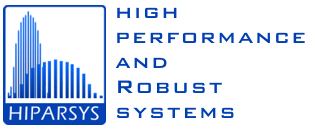Project Overview
It is no longer sufficient to simply optimise a nominal system
design. Firstly systems are becoming increasingly complex, and
non-linear in their behaviour, and hence more sensitive to variation and
uncertainty. Indeed the optimisation process itself can lead designs
into areas of solution space where the performance is high, but so is
the sensitivity to variation. Secondly the emerging fundamental shift in
many industries away from selling products to the provision of services
is migrating the risk of new systems away from the purchaser of the
product to the provider of the service. Commercial pressure is therefore
increasing to address the paradoxical need for robust systems, which are
insensitive to variation in their manufacture and operating
environments, whilst also having the high levels of performance and
innovation essential for competitiveness. Design Simulation and
Modelling (DSM) is key on resolving this paradox.
The issue of integrating and optimising performance with reliability and
risk will be the primary focus of this project named High Performance
and Robust Systems (HIPARSYS). However, to fully resolve
this paradox, and achieve reduced new production introduction time
scales, DSM also needs to be extended to the processes and organisations
that produce the systems. The organisation should be considered as part
of the system, and itself needs to be made high performance and robust.
The DSM of organisations will address the issue of predicting and
validating the emergent behaviour of complex systems. The project's
vision is to develop tools and methodologies that will achieve high
performance and robust systems through relying on sophisticated and
computationally expensive modelling and simulation.
Innovation within this project has two dimensions. The first lies in the
integration and application of a number of disparate technologies that
are currently in the research phase to a set of demanding real world
problems. This will result in the further development and validation of
these technologies. The second, and higher risk aspect, is extending DSM
to organisational systems, by exploiting synergy between intelligent
agent technology and the work psychology understanding of the operation
of individuals and organisations. Further innovation is likely from
tackling the issues of variability and uncertainly in this new domain of
modelling organisations at the same time as addressing them in the more
established world of modelling the physics of products.
The project has four work packages to address the key issues of building
high performance and robust systems:
- WP1 Computational Analysis will look into the parameterisation question together with the issues of minimising computational time;
- WP2 Knowledge Capture will address how knowledge about manufacturing and environmental uncertainty should be captured, treated and reused;
- WP3 Organisational Modelling will model organisations and processes;
- WP4 Integration and Exploitation will ensure the integration and exploitation of the research outcomes among the industrial partners.
The whole project adopts a socio-technical approach, combining expertise in technical and social issues, which is essential for progress in these areas.
